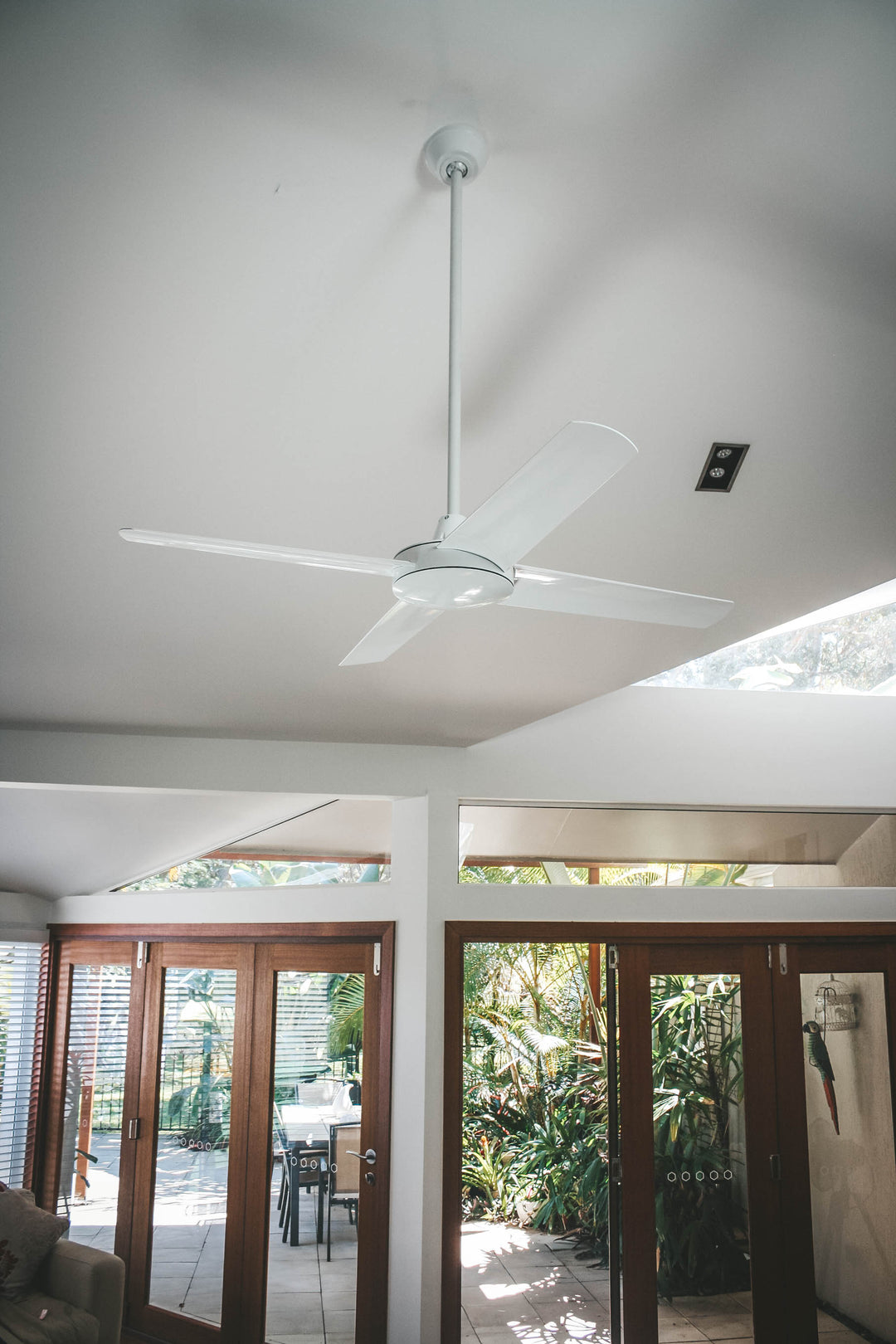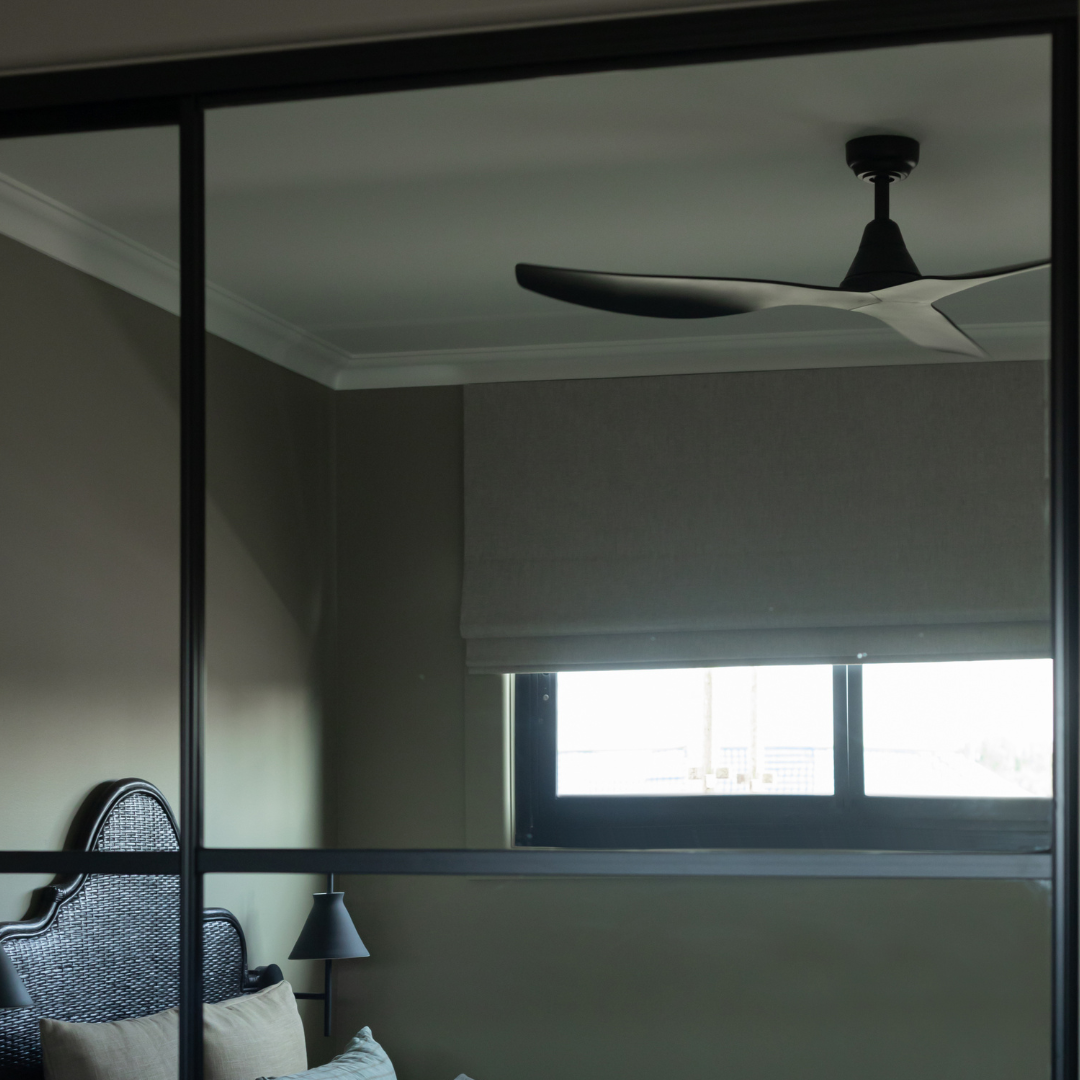Ceiling Fan Performance Guide
Without seeing a ceiling fan running, it can be difficult and confusing to determine what type of airflow you can expect. That's why we've created our Ceiling Fan Performance Guide to help you make a more informed decision.
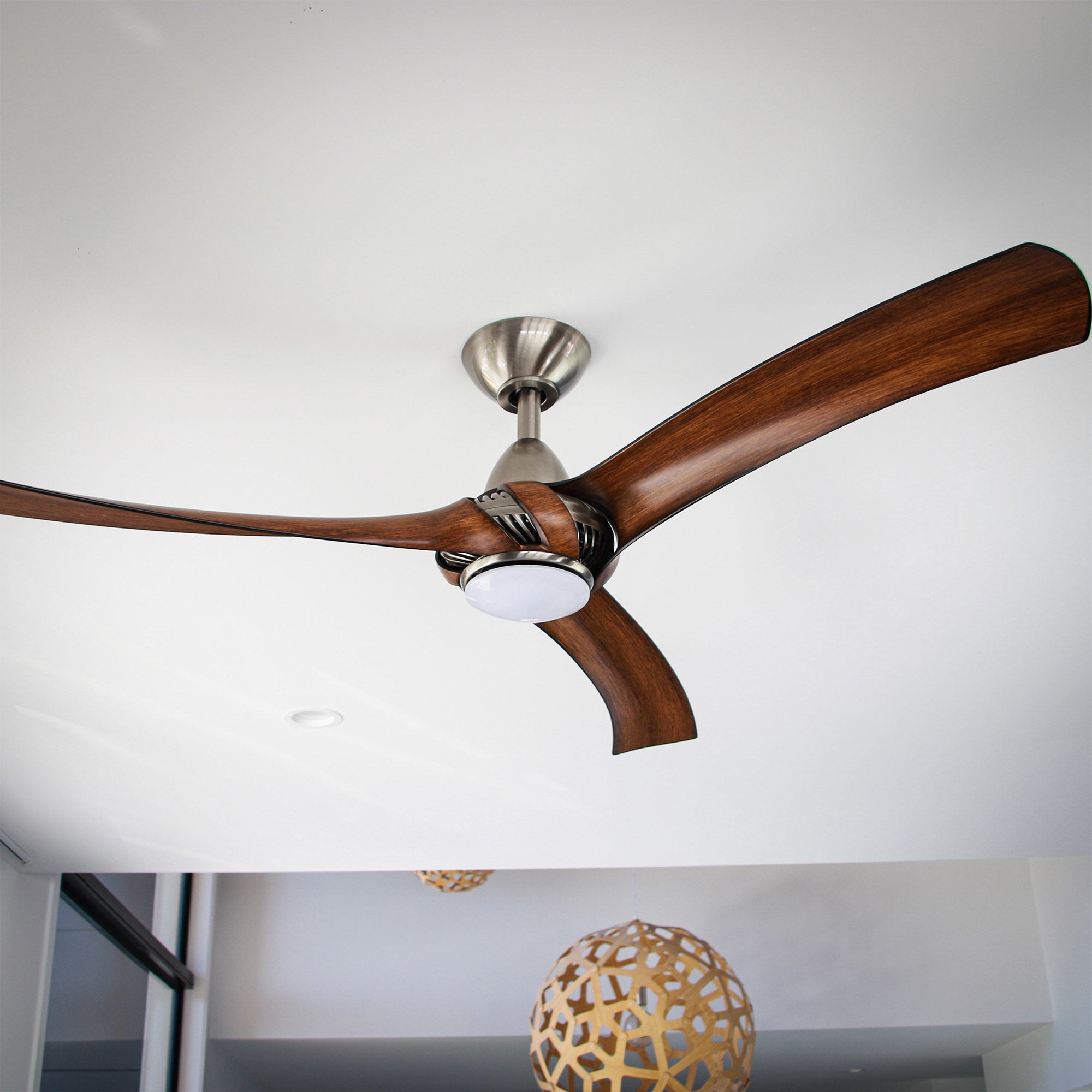
How can I choose a ceiling fan that will provide the right airflow for my space?
The major influencers on the performance of a ceiling fan are the size of the motor, the size and shape of the blades, the material the blades are made of, the RPM of the fan, and the pitch of the fan blades. It is the combination of all of these factors working together that will give your fan the best performance results. However, what works the best functionally may not work the best in terms of style, application for your space, your climate, and most importantly your personal preference.
Ceiling fans are an excellent low-energy appliance to help keep you cool and comfortable on hot and humid days. Ceiling fans cool you down by generating a breeze which creates a wind chill effect. This wind chill effect is increased with the increase in wind speed created from the fan, or its “velocity”. The velocity of wind the fan creates is not the same as the amount or volume of air moved.
“Ceiling fans cool you down by generating a breeze which creates a wind chill effect.”
Manufacturers of ceiling fans often quote the volume of air a fan produces as a metric, Cubic meters per hour or CM/H. While the CM/H metric does give you an idea of the performance of the fan, it does not tell you the full story. For instance, if you are unsure whether you need a 132cm diameter fan or a 152cm diameter fan and you looked to the CM/H of each fan to determine which one would offer the best for cooling you, you would not be evaluating them correctly. If you make this direct comparison, then it is likely that the 152cm diameter fan will have a higher CM/H number as it displaces more air over a larger area but may not create as much wind speed or airflow velocity directly below the fan.
So what should you be looking at to find the right airflow for your space?
The "right" type of airflow depends on a number of factors (where the fan is being installed, the climate you live in, etc.), but the most important is your personal preference. Some people like gentle and quiet airflow, while others prefer powerful airflow. The following sections will help you understand how we've graded our fans, how big your fan should be, and how high you should hang it.
- Understand the type of airflow each fan can provide
- Choose the right size fan for your space
- Hang your ceiling fan at an optimal height
Once you know these things, you should be in a solid position to choose the right ceiling fan for your space and to match your personal preference.

Understand the type of airflow each fan provides.
The best way to know what type of airflow a ceiling fan will provide is to stand under it, of course. However, this is not always possible so we have created our Fan Performance Indicator (FPI) rating system to help understand the type of Breeze you can expect under the fan, along with the total volume of air the fan will move at high speed.
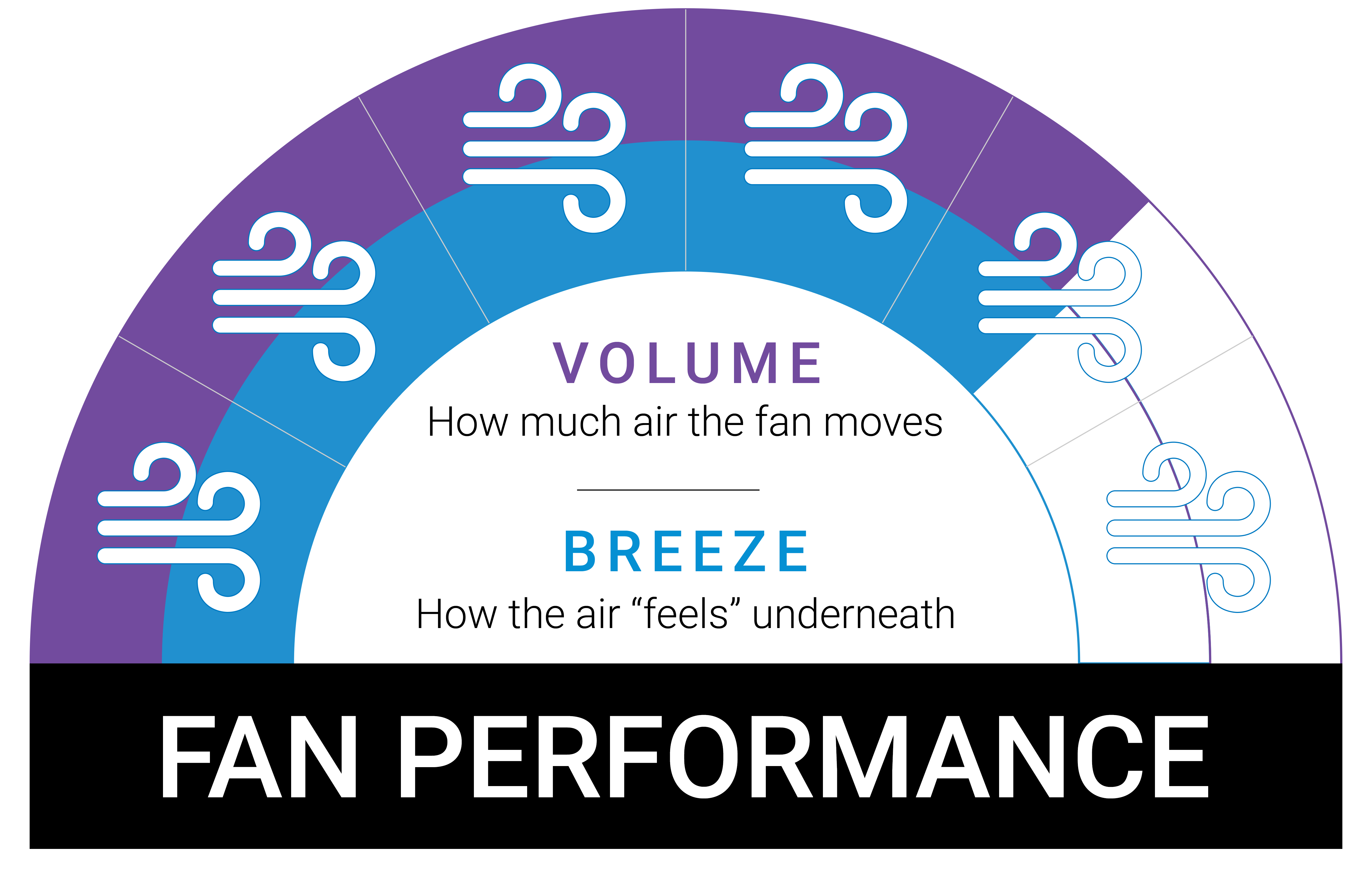
The Fan Performance Indicator (FPI) is split into two bars - the blue bar indicates the ceiling fan's airflow breeze (wind chill) performance on high speed, while the purple bar indicates the ceiling fan's airflow volume (CM/H) on high speed.
Airflow - Breeze (wind chill)
The Airflow Breeze rating goes from Gentle to Fast. A ceiling fan that is more towards the Gentle end will provide gentle, relaxing, and extremely quiet airflow directly below the fan. Conversely, a ceiling fan that is towards the Fast end will provide high-velocity airflow directly below the fan, ideal for very hot and humid climates or if you prefer strong airflow.
Airflow - Volume (CM/H)
The Airflow Volume rating takes the ceiling fan's Cubic Metre per Hour (CM/H) measurement and normalises the results across our entire range of ceiling fans and based on our industry experience on how much air ceiling fans typically move. A ceiling fan towards the Low end will move less air overall, and would therefore not be recommended for larger spaces but may be perfectly suitable for smaller areas. Conversely, a ceiling fan towards the High end moves a lot of air and will disperse the air over a larger area.
Using Breeze and Volume together to make an informed decision
Separately, neither indicator paints the whole picture of your ceiling fan's performance. Together, though, they can be used to make a much more informed decision without being able to see the fan in operation. Below, we have covered a few different examples to help show different cooling solutions and when they might be recommended.
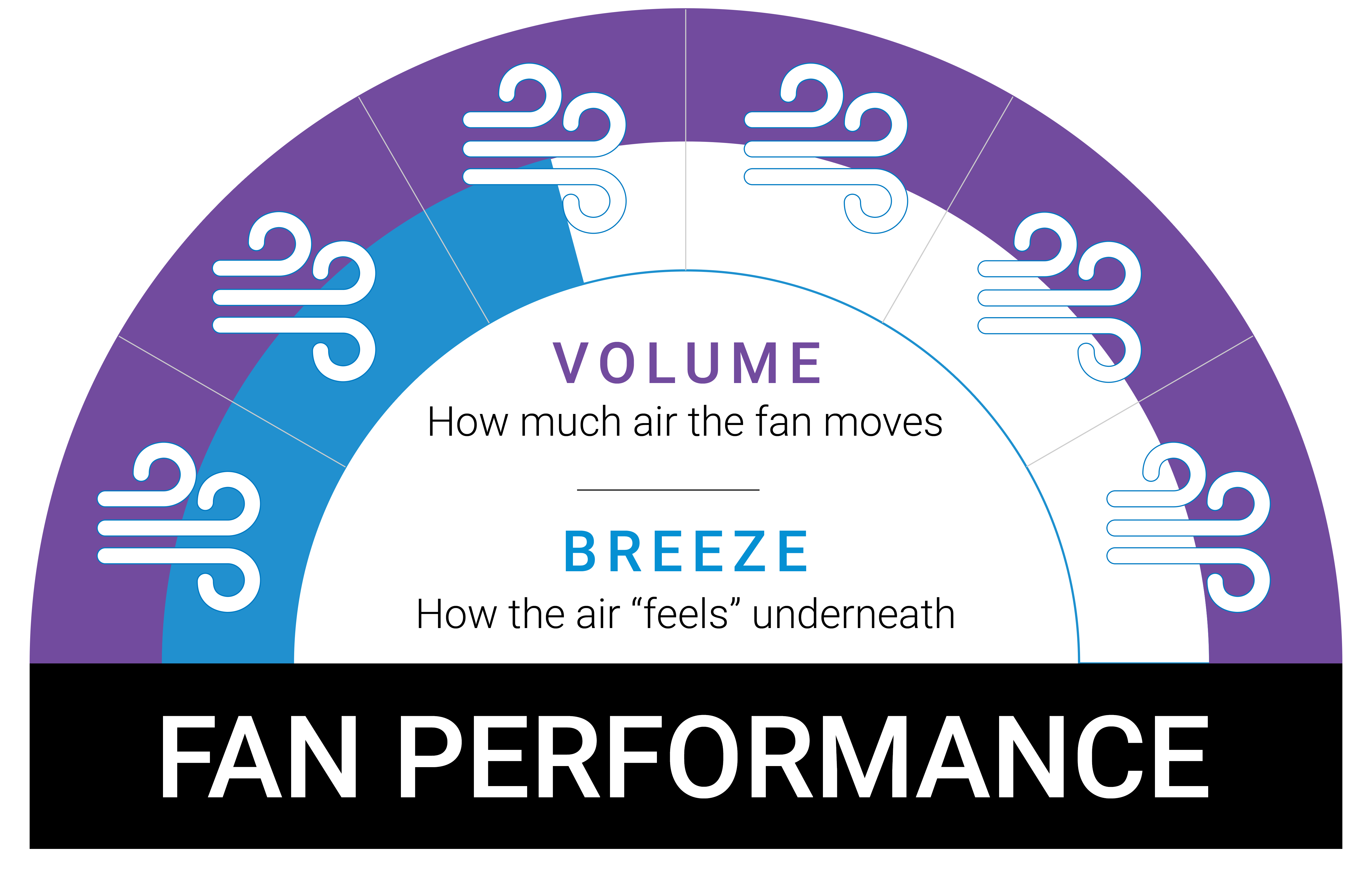
The above FPI results from our large 72" Timbr DC ceiling fan show a more gentle airflow breeze solution with very high airflow volume. This particular model falls into the High Volume Low Speed (HVLS) genre of ceiling fans. It is designed to move huge volumes of air but at a low velocity. The breeze you would experience directly under the fan would be gentle, however, due to the size of the fan, you would enjoy a breeze in a much larger area. This fan would be ideal for very large spaces that could benefit from air circulation - e.g. moving warm air around a space in winter to improve heating, moving air-conditioned air around a large space to improve cooling performance, or keeping the air in a large space fresh. Some applications might be large foyers, restaurants, large high-ceilinged dining areas, large living areas, and so forth.
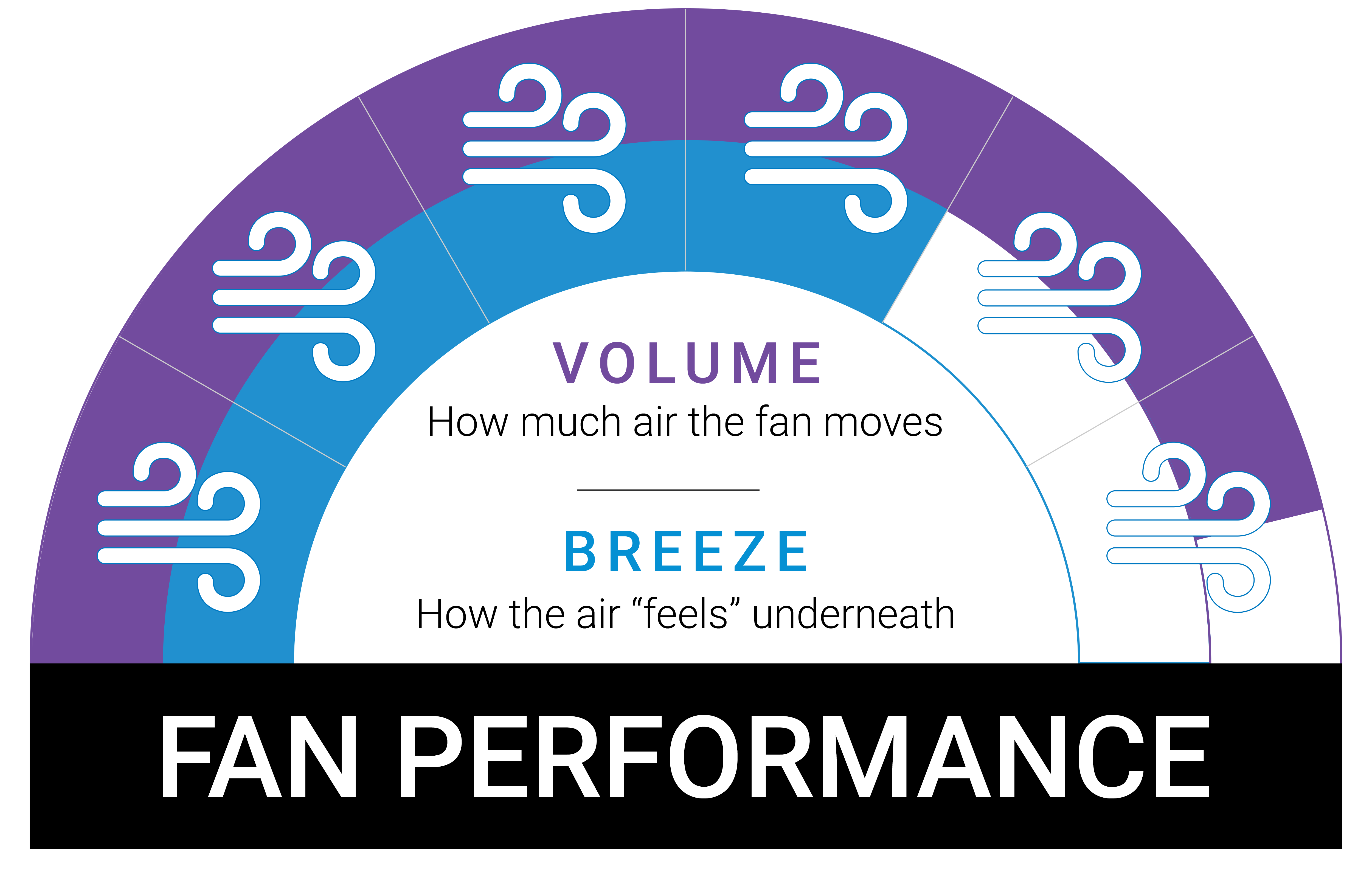
The above FPI results from our 60" Spitfire AC ceiling fan show a ceiling fan that will provide moderate airflow directly below and spreading out from the fan. This is because at 60 inches it is an above-average size ceiling fan that will therefore disperse air over a larger area. Great for master bedrooms, larger living and dining areas where solid airflow is desired while being whisper-quiet.
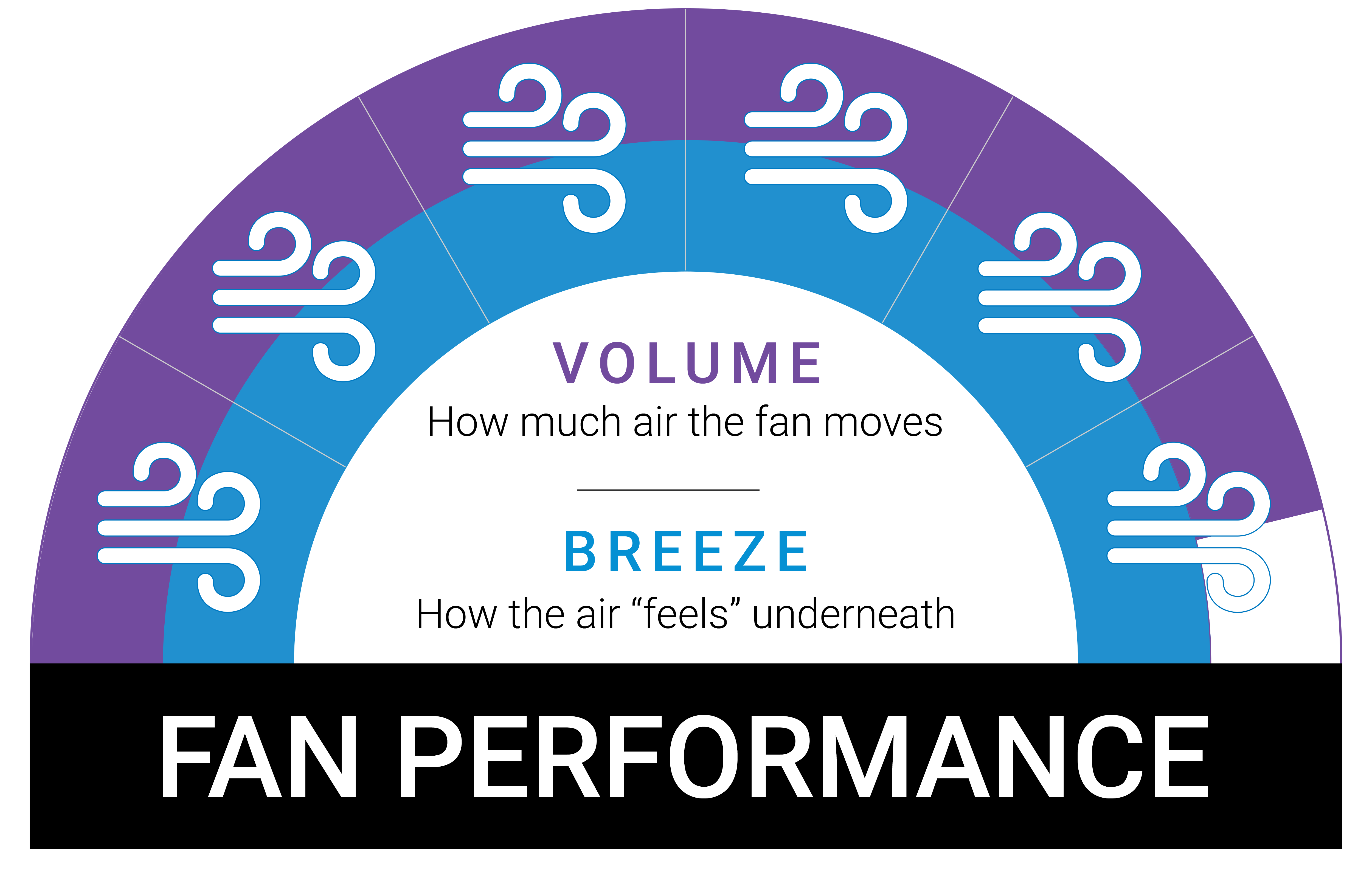
Finally, the above FPI results for the 56" Delta DC ceiling fan show a high-performance solution that will provide a strong breeze directly below the fan while also providing good overall airflow volume for your space.
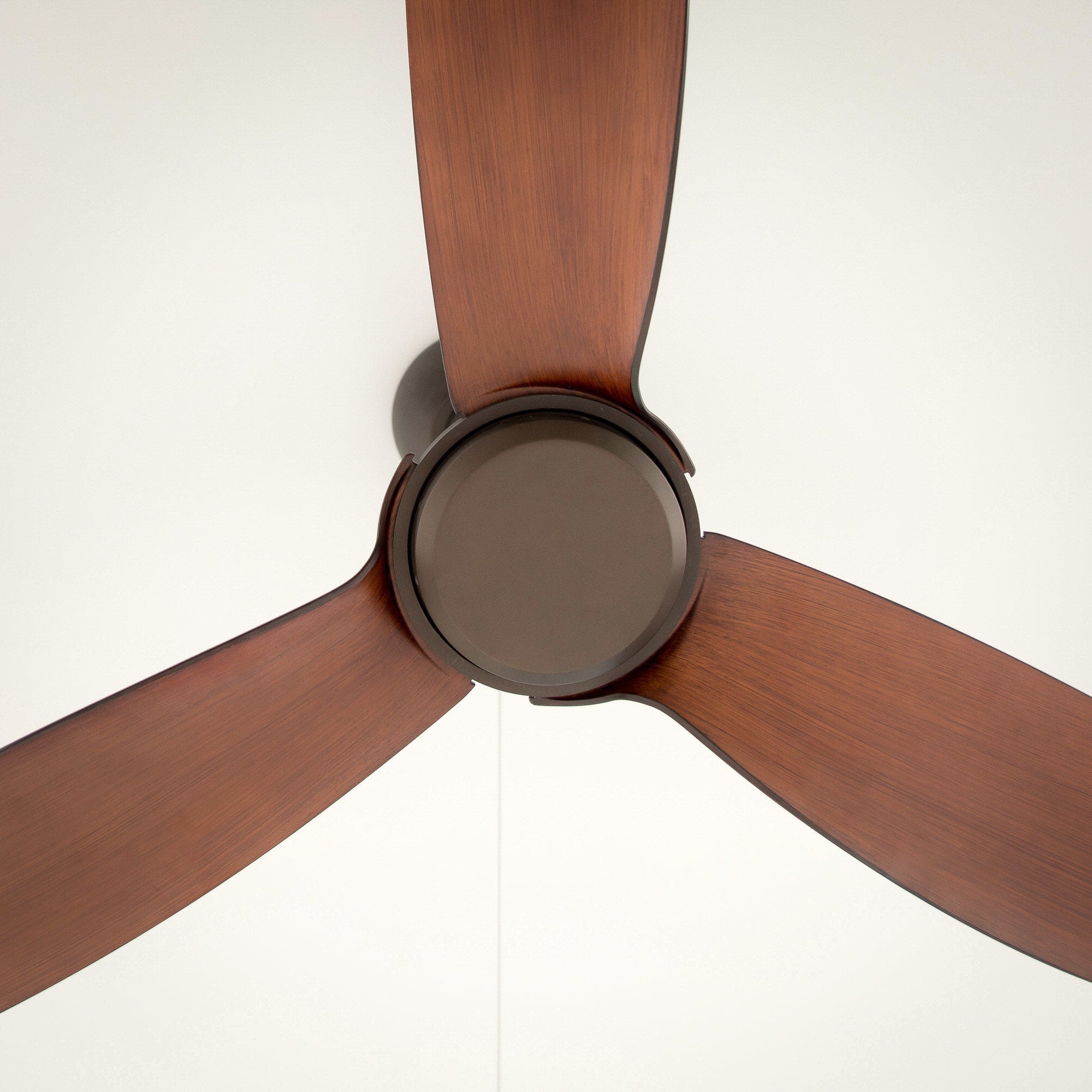
The number of blades on a ceiling fan is not a reliable indicator of performance.
Don't focus too much on the number of blades on your ceiling fan. Yes, blades are an important part of your ceiling fan and the number of blades does impact ceiling fan performance. However, there are many factors that influence ceiling fan performance - blade pitch, blade aerodynamics, motor performance - which all need to be considered in order to determine overall performance.
So the number of blades, on its own, is not a reliable indicator of performance. A three blade ceiling fan may be better or worse than a four-blade fan, a four-blade fan may be better or worse than a five-blade fan, and so on. We have published our Fan Performance Indicator (FPI) on all our Data Sheets and also on every product page. The FPI should be used to help identify models that will offer you the right type of cooling based on your personal preference and requirements.
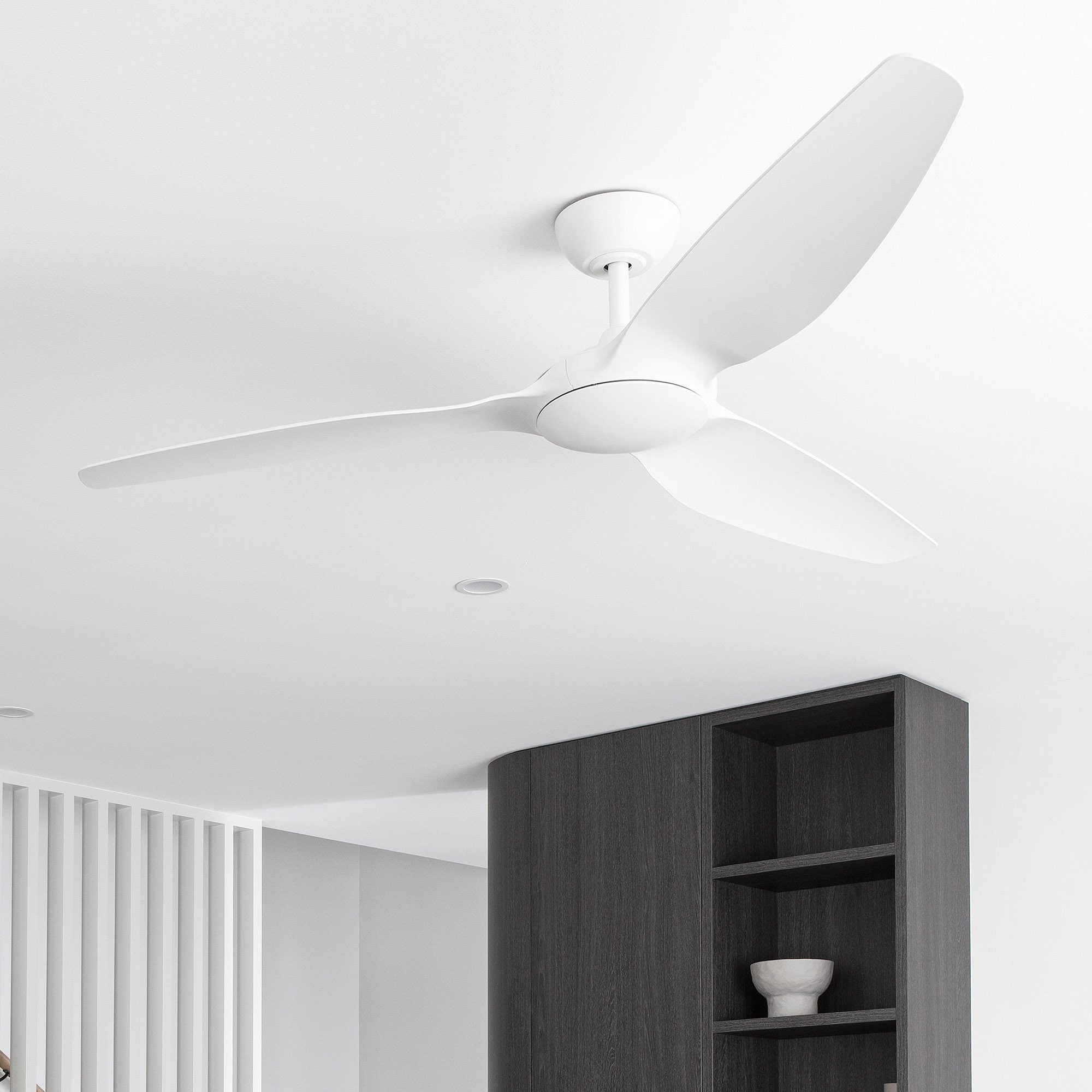
Ceiling fans also provide indirect cooling through air circulation
A factor to consider with your ceiling fan's performance is its ability to circulate the air. A fan's effectiveness is not only its ability to cool whatever is beneath it, but you will also get benefits from the fan circulating air throughout the room.
In an average-sized room with an average size fan, the continued forcing of the air down towards the floor will see the air dissipate outwards to the room walls and up until the air has circulated back to the fan, creating a circular flow within the room. This circular flow provides you with the best application of your ceiling fan for full effect. Factors that may limit your ceiling fan's performance are if the fan cannot draw enough air from above, if the fan is too close to a wall and the flow is interrupted, or if the fan is obstructed by an air conditioning duct and provides uneven amounts of air.
When using fans in a patio or an outdoor situation the circulation of air is affected by the fact that there are no walls present to feed the air back to the fan. So for outdoor applications of ceiling fans, the velocity and the CM/H of the fan is most important as the air provided will be forced down and simply be lost in the outdoor environment. Fortunately, when fans are used outdoors it is generally not in a sound-sensitive environment so a high velocity, high RPM fan will provide adequate cooling and breeze in these situations.



